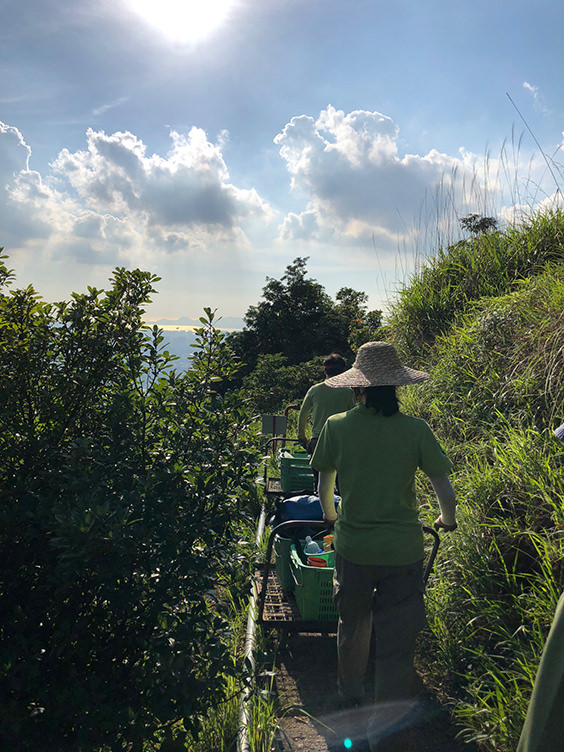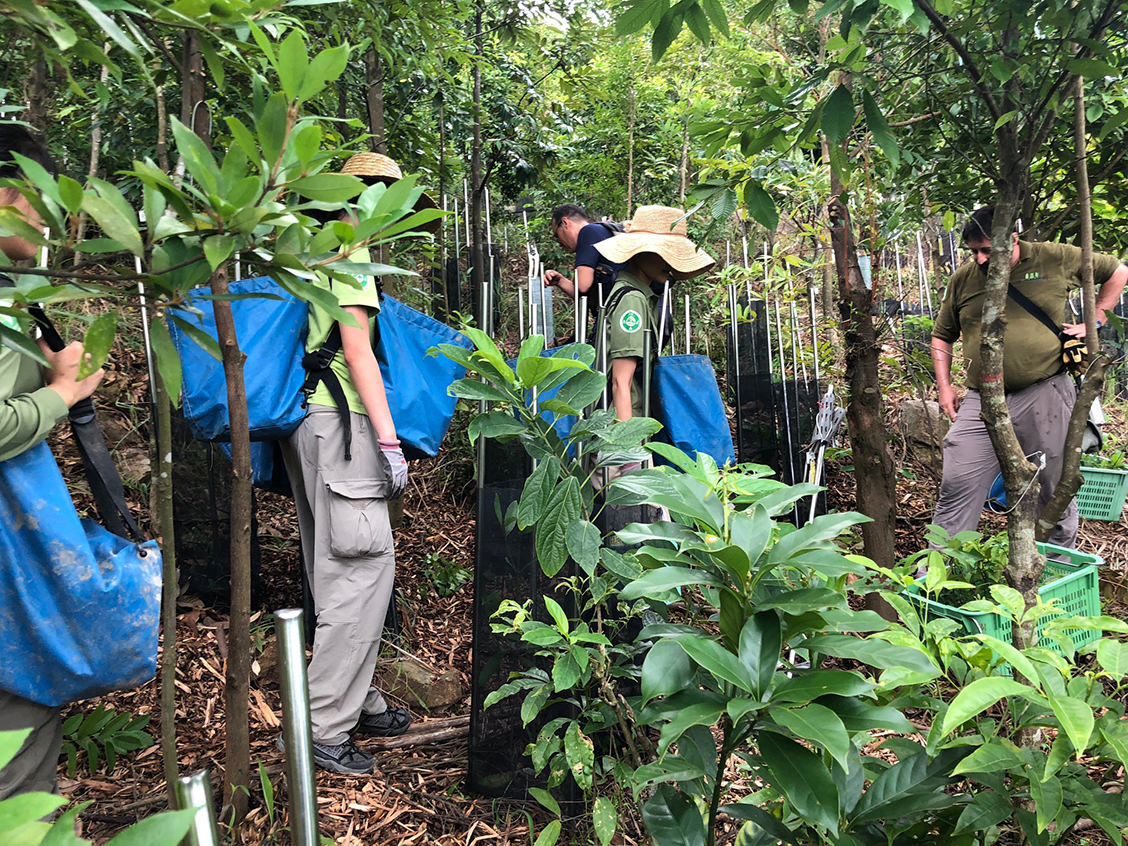

After a casual look at some of Hong Kong’s tree covered hillsides, you would be forgiven for thinking native forest has recovered well. Unfortunately, on closer examination, you might begin to appreciate that, in fact, most local woodland consists of a very narrow range of tree species that form a dense canopy at a fairly uniform height. Beneath the trees, the forest floor is cast in such deep shade that little in the way of an understorey ever develops, and the dominance of just one or very few woody species frequently gives rise to major pest or disease outbreaks. In contrast, mixed tropical and sub-tropical forests are multi-layered ecosystems, with the level of the canopy undulating due to the presence of main canopy, sub-canopy and emergent trees, allowing light to filter through and nourish a rich diversity of shrubs and herbs on the forest floor. The high humidity within these forests nurtures an abundance of epiphytes on the trunks and branches of large trees, including orchids, ferns, gesneriads and even bushy shrubs such as rhododendrons.
In order to find the best approach to restoring such rich and resilient plant life in Hong Kong’s secondary forests, we set up a series of experimental plots in which the existing trees were structurally pruned to reduce the risk of storm damage and selectively thinned to allow more light to penetrate. A compost, wood chip and biochar mulch mixture was applied to help improve the soil’s nutrient content and water-holding capacity. A wide range of native tree seedlings was planted, and their growth is being monitored in relation to incident light levels.
Opening up the canopy should also permit a healthy herbaceous understorey to thrive. Enhancement planting with a broad range of native herbs, shrubs, climbers and epiphytes has been carried out to enrich the forest floor in the plots and to bring planting stock of wide genetic heritage into close proximity, offering new opportunities for cross-pollination.
All of this helps reinvigorate the area by attracting new communities of pollinators, herbivores, predators and seed dispersers. It also creates a network of fine roots to hold the soil in place and a carpet of shoots to retain fallen leaves, averting soil erosion and building the nourishing top soil needed for the trees to reach their full potential. The burgeoning understorey will also help prevent invasive and aggressive weeds from gaining a foothold, thereby allowing the trees to rise upwards unhindered. By creating pockets of high species diversity in this way, we hope to kick-start natural colonisation of other ecologically impoverished areas of our hillside.
Elsewhere across KFBG’s site, roadside planters, artificially reinforced slopes and green roofs mimic forest edges as an ecological niche awaiting colonisation by suitably adapted plants. Following careful species selection, we are introducing attractive native species of high ecological value into our public displays to help restore connectivity between man-made and natural areas.

